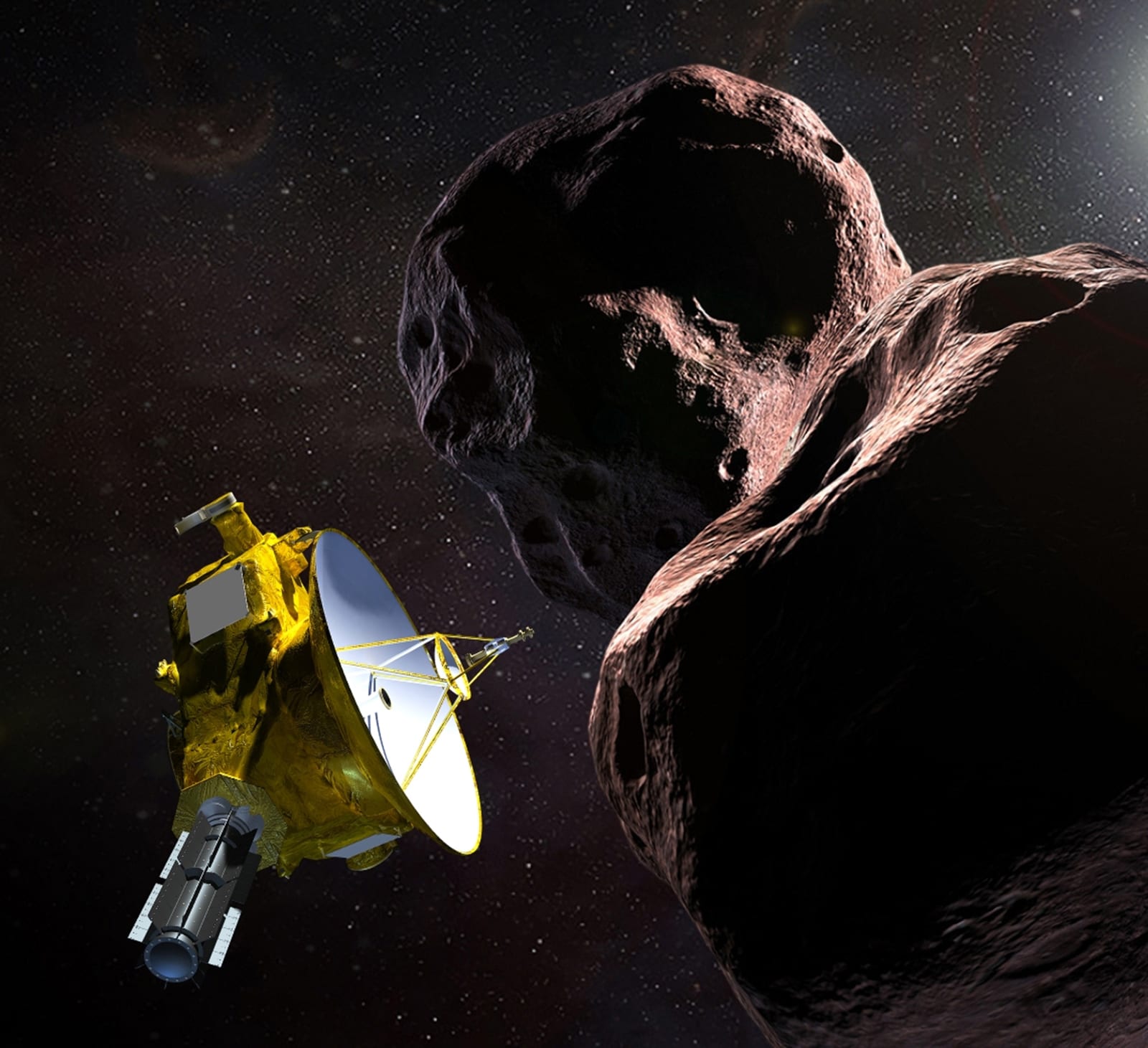
An illustration of NASA’s New Horizons spacecraft encountering 2014 MU69 – nicknamed “Ultima Thule” – a Kuiper Belt object that orbits one billion miles beyond Pluto. Credit: Courtesy of TNS
Technology from Ohio State has reached the stars in the form of a main-mission antenna on board the New Horizons probe, which made history on its second flyby past Pluto on Jan.1.
Built in the ElectroScience Laboratory at Ohio State in 2002, the high-gain antenna is essential to the New Horizons mission, ESL Researcher Teh-Hong Lee said.
The ESL chamber in which the probe was partially constructed was just big enough to satisfy NASA’s original measurements. In order to fulfill Ohio State’s part of the project, the lab worked to test its part of the probe as quickly and accurately as it could.
“Because the Horizon has to travel so far out in the outer solar system, how accurate the antenna performs compared to the original design is very critical,” Lee said.
The 2.4-meter antenna’s purpose on the journey is to take and send photos from the mission back to Earth. To maintain constant communication, the device must always be precisely pointed homeward.
Since New Horizons was launched in 2006, it has worked alongside the Hubble Telescope — a NASA telescope operating in low Earth orbit since 1990 — to search for and discover new celestial objects, Lee said.
One of the objects discovered, Ultima Thule, is located in the Kuiper Belt, and is more than 4 billion miles away from Earth. Considered a contact binary — two touching bodies — its snowman-like appearance has caught the attention of researchers.
Marshall Johnson, a postdoctoral fellow in the Department of Astronomy, said the odd shape of Ultima Thule most likely means it hasn’t been disturbed since its formation.
“It’s two spheres that are kind of glommed together, so the spherical shape is probably something interesting about how they formed,” Johnson said.
Johnson said the probe will continue to fly by in orbit, sending back signals to determine the object’s color, composition and any other irregularities around its system.
In the future, NASA will likely use its own chamber to create bigger and better parts for a new probe, one Ohio State also helped design in the mid-’90s.
“Our facility isn’t quite large enough for the next mission, since the antenna is much bigger than the New Horizons’,” Lee said.
Still, some of the ElectroScience Lab’s most recent innovations range from working with cell phone, GPS and even medical sensors to create powerful radio receptors.
“We have a very broad spectrum of research,” Lee said. “So I’m sure the same technology used to test this antenna for New Horizons will be used again.”


